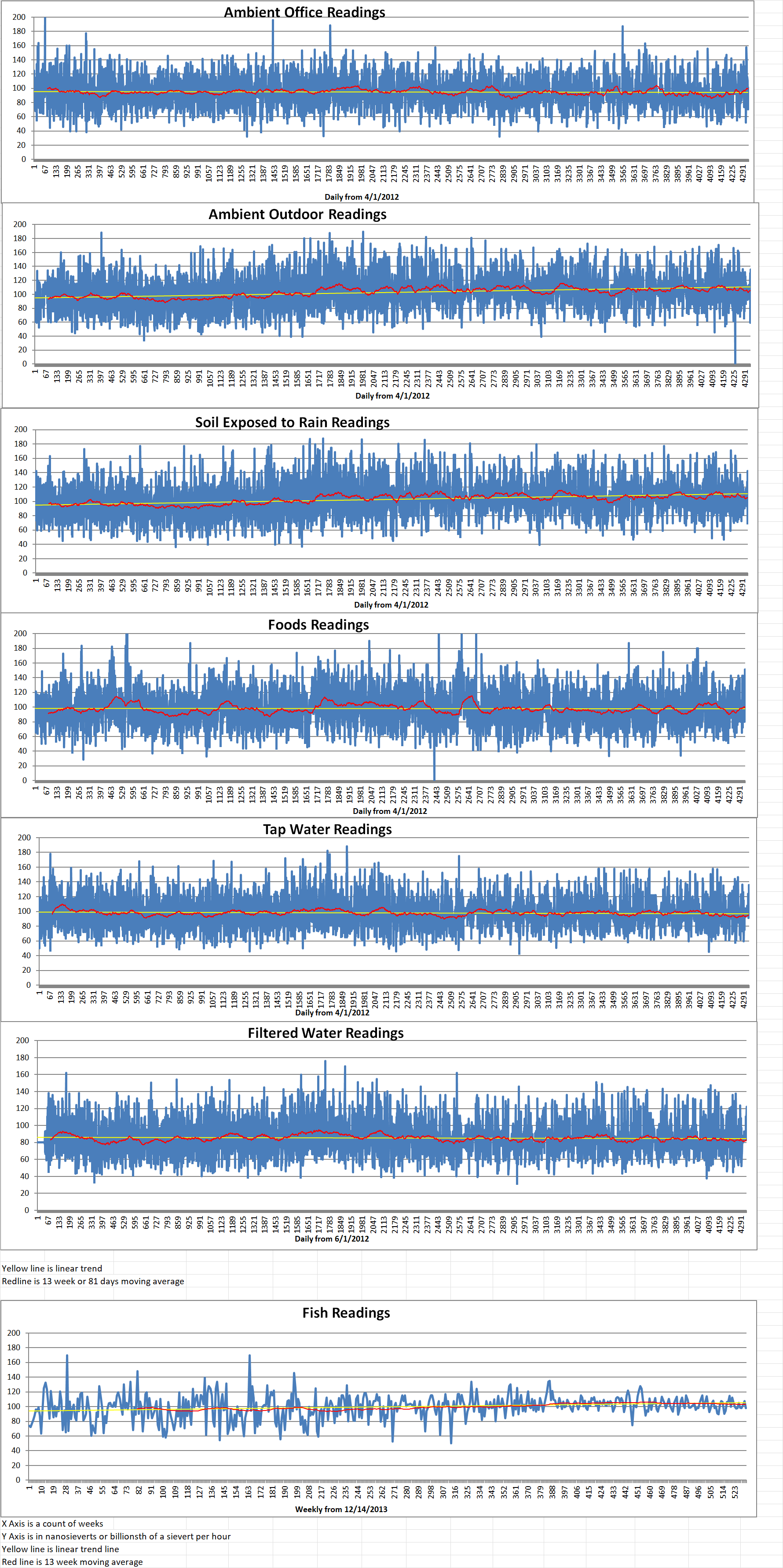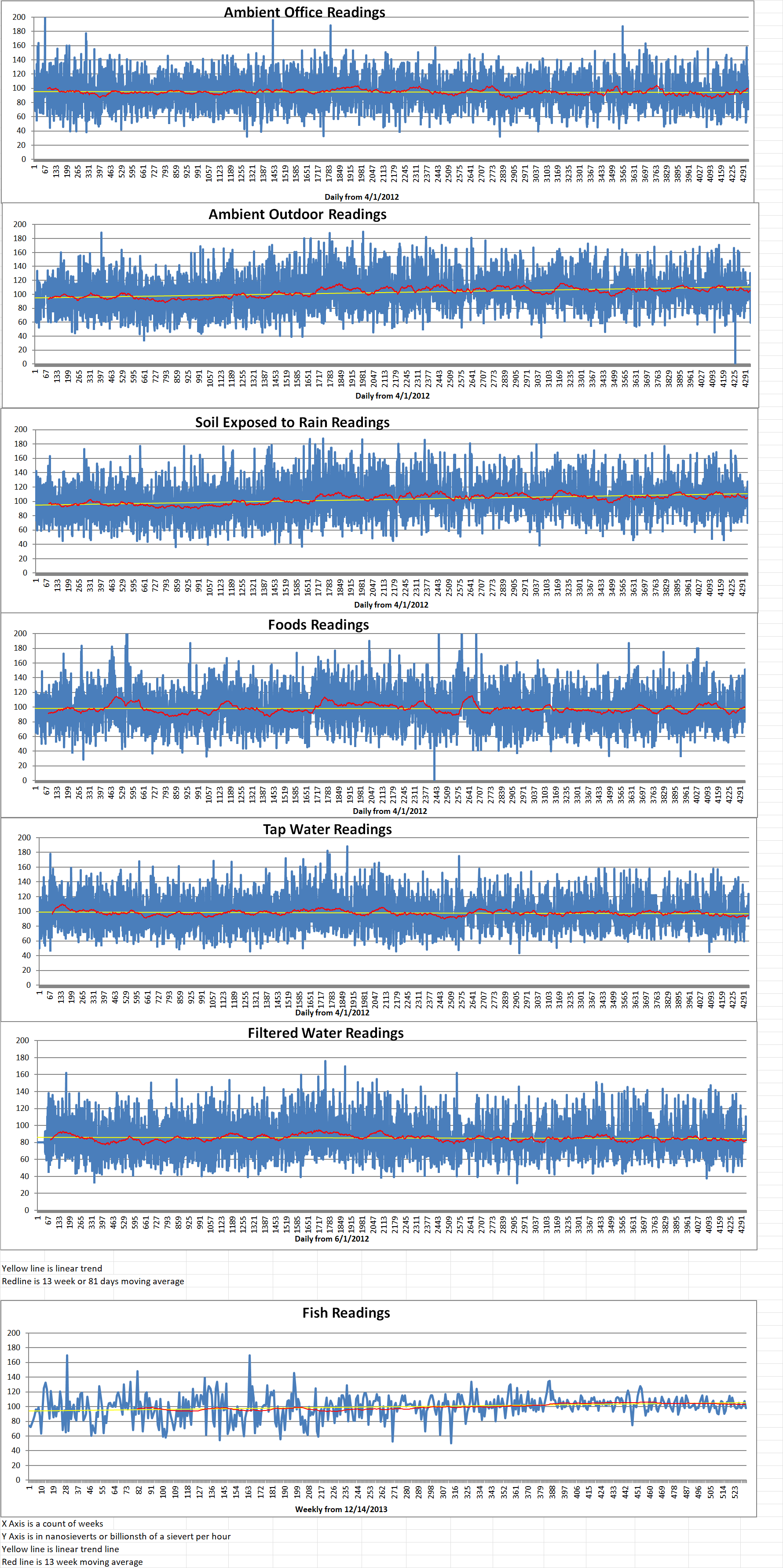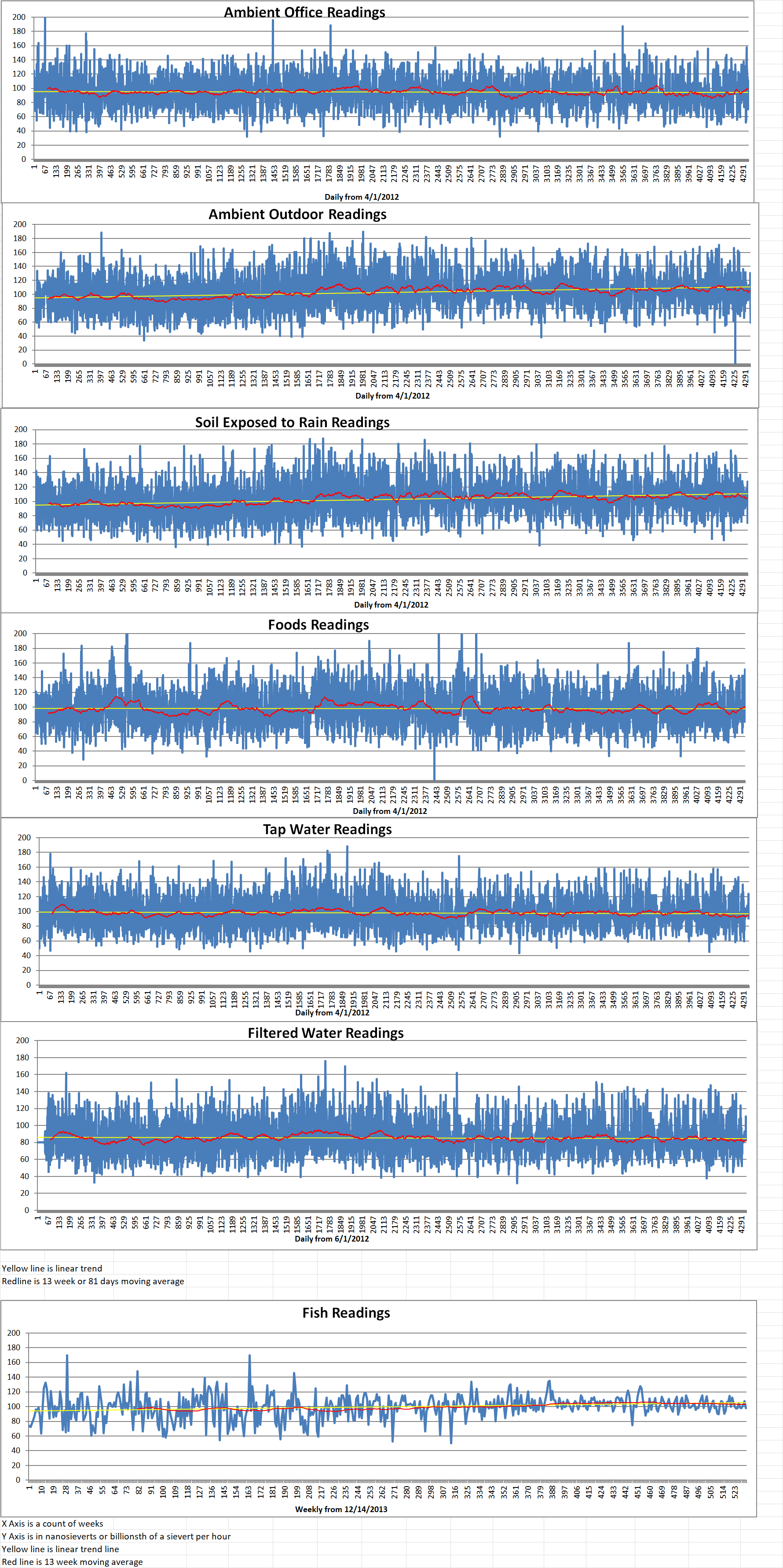Nuclear-powered container ships could be moving cargo in and out of Europe by the end of the decade. Danish company Maersk moves twelve million containers a year. It has partnered with Lloyd’s Register and nuclear technology start-up Core Power to study the regulatory feasibility of using fourth-generation nuclear reactors to supply power to container ships. Negative public perception and waste management continue to be a challenge for the nuclear industry. The study will investigate how to improve regulation and safety rules for its use.
Ole Graa Jakobsen is Maersk’s head of fleet technology. He said, “Nuclear power holds a number of challenges related to for example safety, waste management, and regulatory acceptance across regions. If these challenges can be addressed by development of the new so-called fourth-generation reactor designs, nuclear power could potentially mature into another possible decarbonization pathway for the logistics industry 10 to 15 years in the future.”
Large maritime vessels run on bunker fuel which is a tar-like substance that belongs to a large family of petroleum-based fuel oils. The maritime transport industry is responsible for three percent of global total carbon emissions. Production has increased by twenty percent over the last decade. A U.N. Trade and Development report said that it would cost up to twenty-eight billion dollars annually to decarbonize the world’s fleet by 2050.
Maersk has set the ambitious goal of reaching net zero by 2040. It is investing heavily in green methanol to decarbonize. Its joint study with Core Power and Lloyd’s Register into nuclear power may open up the possibility of a multi-fuel pathway.
Lloyd’s Register released a report last month on the use of nuclear power as an alternative low carbon maritime fuel. It highlighted how nuclear power could provide a cost-effective solution for the maritime industry because nuclear vessels would not need to be refueled as often as bunker-using container vessels. They consume around sixty-three thousand gallons of fuel per day and need to refuel every few months.
Nuclear power has been used for many military vessels, with naval reactors, widely used in the US military, typically needing to be refueled every ten years. Newer reactor models have been designed to last up to fifty years in aircraft carriers and submarines. This allows them to travel distances of more than ninety-three million miles.
Though nuclear power has been successful in the military, progress in the maritime industry has been slow because of cost restraints and safety concerns around ships entering ports.
Lloyd’s also says that the designs for nuclear reactors currently under consideration for the maritime industry include molten salt reactors (MSR) and micro-reactors which have passive safety features in place to prevent nuclear accidents. Newer reactors contain cooling systems do not depend on emergency generators or pumps. This makes them “walk away safe” in the event of a malfunction.
Tighter regulation is required on how to dispose of large volumes of radioactive waste more efficiently. The report maintains that fourth-generation reactors will have the capacity to reduce the amount of low-level waste produced, which accounts for ninety percent of nuclear waste.
The International Chamber of Shipping 2022-2023 survey of more than 130 maritime executives reported that nine percent anticipate nuclear power will find commercial use in the next decade.
The joint study involving Maersk will mainly look to provide evidence for regulatory changes in safety and operation around nuclear power. These changes will improve the understanding of how nuclear power works for members of the maritime supply chain who will be affected by its use. The end goal of the study is to create a framework for the construction of a nuclear-powered container ship to be used in a European port.
Mikal Bøe is the CEO of Core Power. He said that he expects first orders for reactor-equipped vessels to come in by around 2028-29, and hopes to build a ten-billion-dollar order book by 2030.
Blog
-

Nuclear Reactors 1420 – Maersk, Lloyds Register and Core Power Are Studying The Use Of Nuclear Power For Container Ships
-
Nuclear News Roundup Sep 02, 2024
Anti-nuclear energy stance fades among LDP presidential hopefuls japantimes.com
Nuclear power likely to be the hottest topic at NY’S energy summit in Syracuse Syracuse.com
Nigeria and China Sign Economic, Nuclear Energy Pact usnews.com
China Reacts After Russia Says It Intends To Change Nuclear War Policy newsweek.com
-

Geiger Readings for Sep 02, 2024
Ambient office = 115 nanosieverts per hour
Ambient outside = 95 nanosieverts per hour
Soil exposed to rain water = 98 nanosieverts per hour
Avocado from Central Market = 65 nanosieverts per hour
Tap water = 93 nanosieverts per hour
Filter water = 80 nanosieverts per hour
-
Nuclear News Roundup Sep 01, 2024
Westinghouse tech-based nuclear reactors approved for projects in China pennbizreport.com
America’s nuclear ‘downwinders’ deserve justice yahoo.com
Enough is Enough: End Nuclear Testing Once and For All un.org
Russia’s Rosatom chief sees very high risk of strikes on Kursk nuclear plant English.alarabiya.net
-

Geiger Readings for Sep 01, 2024
Ambient office = 108 nanosieverts per hour
Ambient outside = 112 nanosieverts per hour
Soil exposed to rain water = 113 nanosieverts per hour
Avocado from Central Market = 100 nanosieverts per hour
Tap water = 96 nanosieverts per hour
Filter water = 87 nanosieverts per hour
-
Nuclear News Roundup Aug 31, 2024
Commercial SMR Agreement Reached at U.S-Africa Nuclear Energy Summit energycentral.com
Russia to change its nuclear doctrine in response to West’s “escalation course” Pravda.com.ua
US prioritizes deterrence over denuclearization on North Korea, experts say voanews.com
Kazakh President Announces Date For Controversial Nuclear Plant Project rferl.org
-

Geiger Readings for Aug 31, 2024
Ambient office = 87 nanosieverts per hour
Ambient outside = 99 nanosieverts per hour
Soil exposed to rain water = 95 nanosieverts per hour
Green onions from Central Market = 84 nanosieverts per hour
Tap water = 96 nanosieverts per hour
Filter water = 83 nanosieverts per hour
Dover Sole from Central = 98 nanosieverts per hour
-

Nuclear Reactors 1419 – France Turns On New Flammenville Reactor After Twelve Years Of Delays
France is starting up its first newly built nuclear reactor in a quarter of a century. The project is twelve years behind schedule and has suffered multiple setbacks. France is still looking to a nuclear revival with plans for more new plants.
EDF is the French state-owned operator of Europe’s biggest fleet of nuclear power stations. EDF said late on Monday that the first chain reactions at the Flamanville 3 reactor on France’s Normandy coast were due to get under way overnight.
If these tests are successful, the reactor will eventually be connected to the grid before the end of the year. This will happen once it has reached twenty five percent of its total one billion six hundred and fifty megawatts capacity.
The reactor is France’s fifty seventh and a prototype of models that EDF wants to develop at home and overseas. It has come to epitomize the reversals the nuclear industry was suffering globally in the wake of a downturn in orders over recent decades. This has prompted skilled workers to leave the nuclear sector.
Flamanville ended up costing more than four times its initial budget at fourteen billion dollars. It took longer to finish than similar models that EDF built in China and Finland that were also hit by major delays.
Components for the complex reactor design had to be retooled, some after complaints from safety regulators. EDF was also criticized by the French government for how much it had struggled to co-ordinate a project that involved hundreds of suppliers.
Régis Clement is the co-head of EDF’s nuclear production division. He explained that the launch is “… a historic step in this project. Our teams are on the starting blocks.”
EDF has contracts to build new reactors in Britain and is tendering to export its design elsewhere. It said that it had learned valuable lessons from Flamanville 3 that will allow it to reduce construction times in future. However, it still faces a series of hurdles at home despite French President Emmanuel Macron launching a plan to build at least six new reactors.
The orders have yet to be formalized. A political impasse in Paris may only delay the process further, after legislative elections this summer delivered a hung parliament. EDF is spending money filling thousands of new positions to prepare for the orders. It needs to agree on a funding plan for the projects, which could cost over fifty-seven billion dollars.
Several people close to the company said hopes of reaching a deal by the end of the year are fading. An initial ambition to deliver the new reactors by 2037 seems overly optimistic as a result. Other challenges include improving design updates for the future reactors and training a range of staff from engineers to welders. EDF also faces competition overseas from other players amid a worldwide revival of nuclear technology.
Nuclear power is valued for its low carbon emissions. However, it has faced an atmosphere of distrust after the Chernobyl accident of 1986 and the Fukushima meltdown in Japan following a tsunami in 2011. -
Nuclear News Roundup Aug 30, 2024
Why Is the US Fighting Nuclear Threats Behind Closed Doors? Hindustantimes.com
TVA approves further funding for Clinch River SMR world-nuclear-news.org
Kazatomprom lowers 2025 uranium production expectations world-nuclear-news.org
Podcast: Finland’s innovative SMR aims to decarbonize district heating world-nuclear-news.org
-

Geiger Readings for Aug 30, 2024
Ambient office = 90 nanosieverts per hour
Ambient outside = 103 nanosieverts per hour
Soil exposed to rain water = 104 nanosieverts per hour
Blueberry from Central Market = 93 nanosieverts per hour
Tap water = 94 nanosieverts per hour
Filter water = 80 nanosieverts per hour
